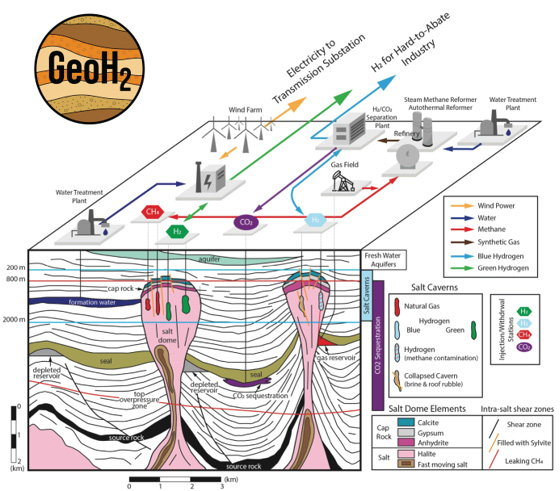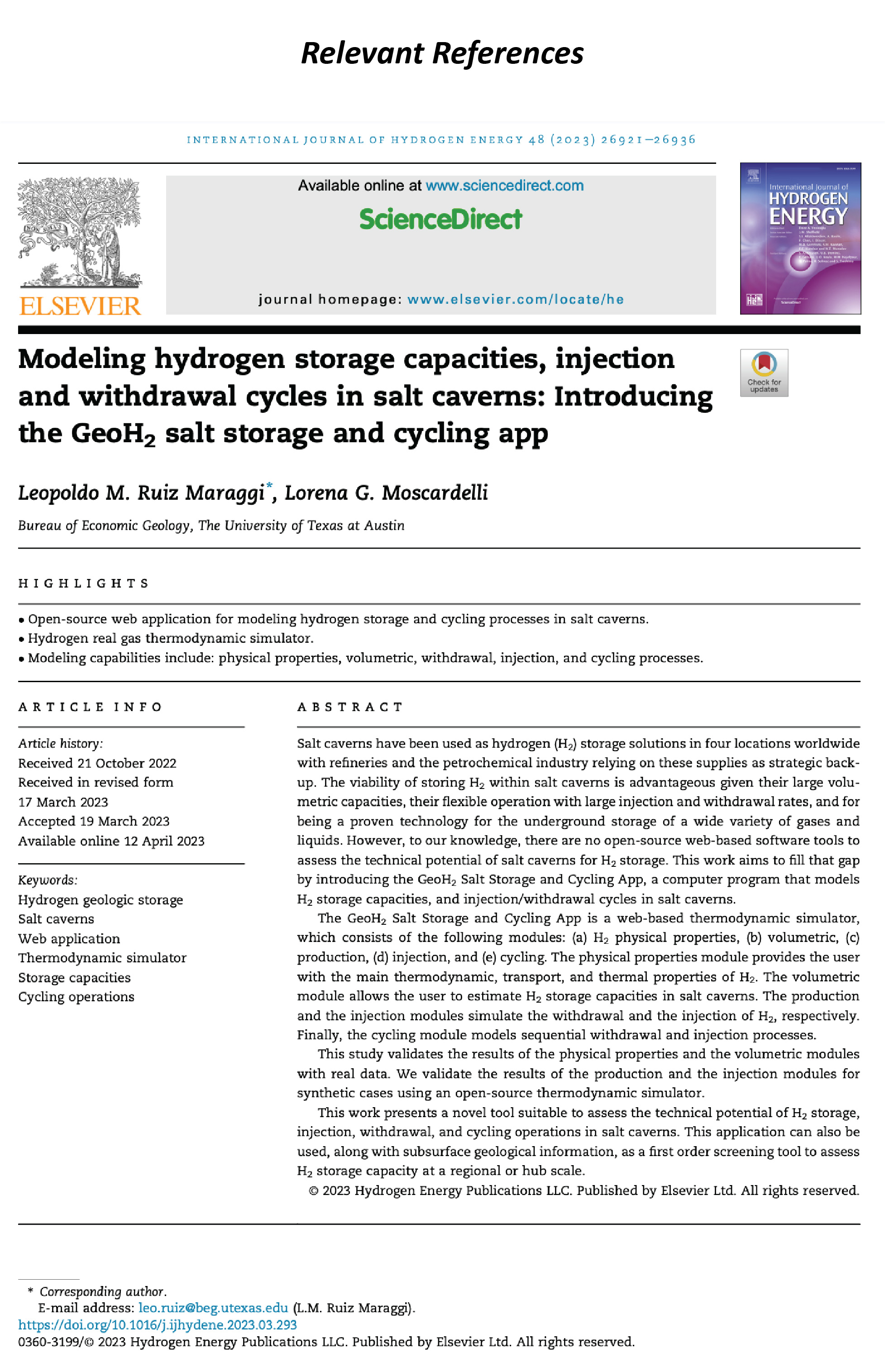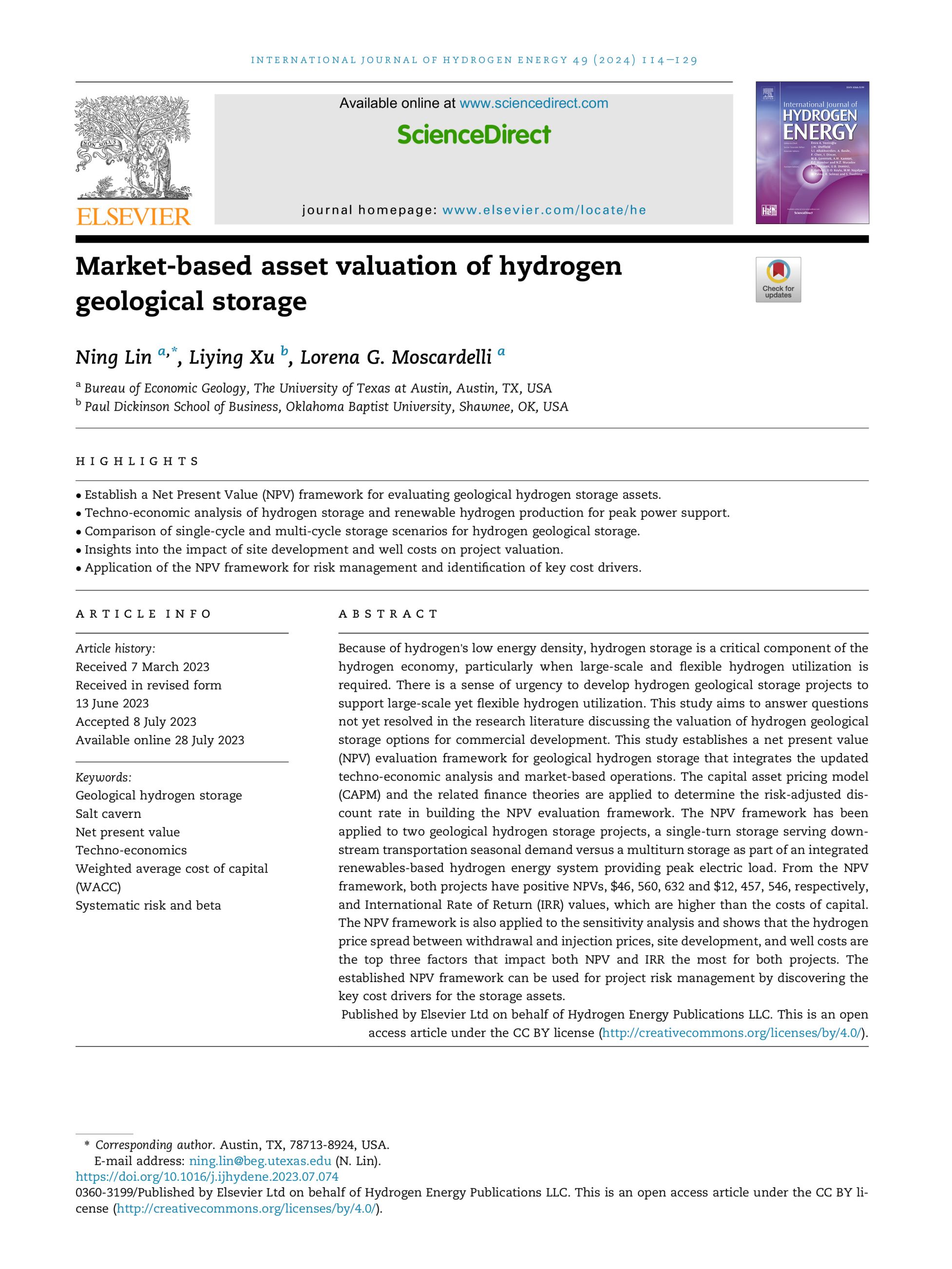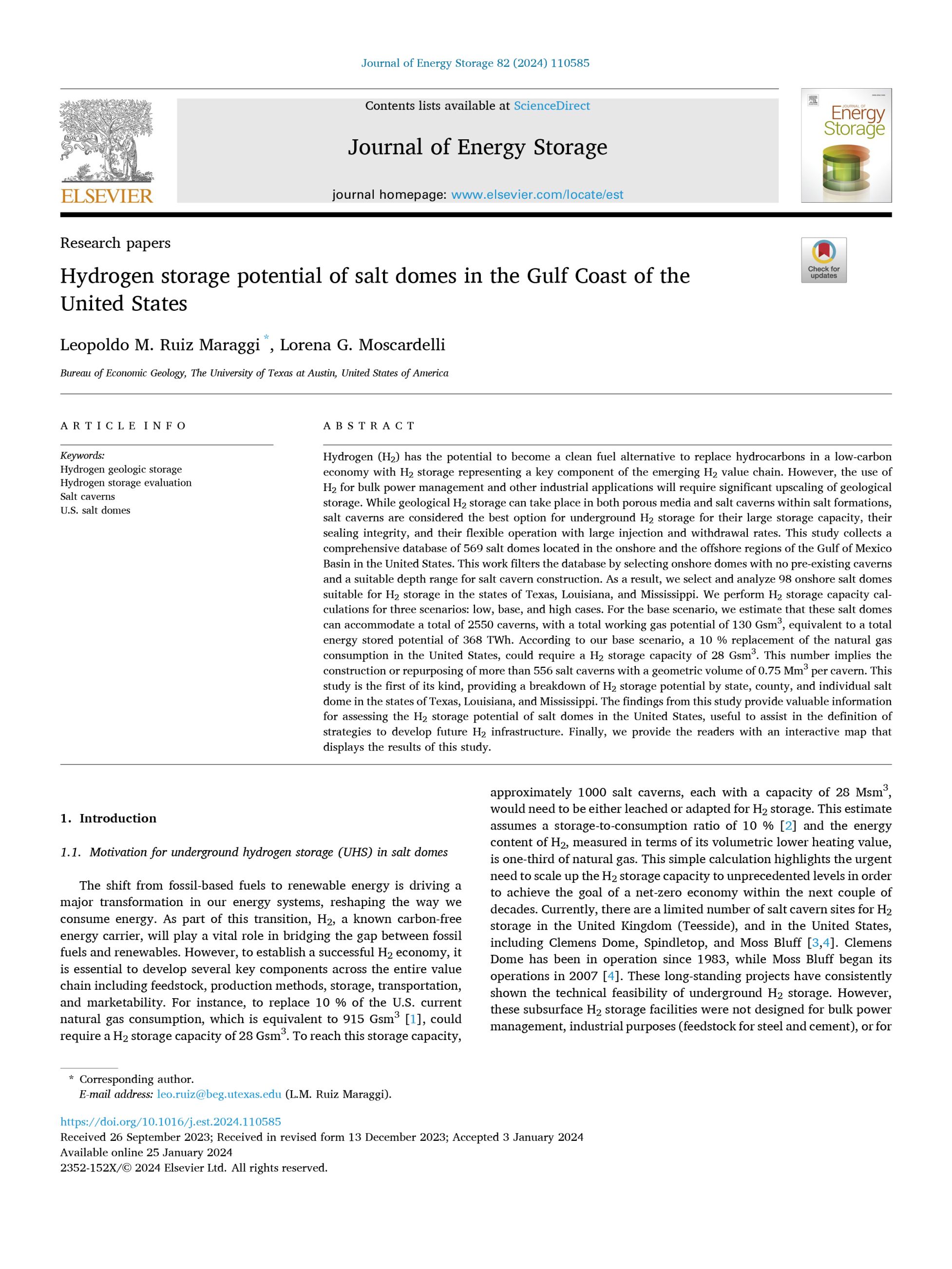
Motivation
The shift in energy consumption from fossil-based fuels to renewable energy is reshaping the fabric of our energy systems. Hydrogen, a known energy carrier, can be used to help society bridge the gap between fossil fuels and renewable energies.
A viable H2 economy requires the development of several functional elements across the value chain including geological storage. Salt caverns have been used as H2 storage solutions in four locations worldwide with refineries and the petrochemical industry relying on these supplies as strategic backup. H2 storage in salt caverns has been categorized as a proven technology; however, the use of H2 as an energy carrier broadens the scope of use beyond refineries and the manufacture of fertilizers.
Upscaling of the utilization of salt caverns for H2 storage for purposes of mitigating renewable energy curtailment, power generation, and other purposes will require estimations of H2 storage capacity for new sites based on subsurface conditions, as well as a better understanding of H2 injection/withdrawal cycles and its effects on caverns and infrastructure.
Application Description
The GeoH2 Salt Storage and Cycling Application is a modular web-based application. The application provides the user with a wide range of capabilities such as the ability to calculate H2 storage capacities, and modeling injection and withdrawal cycles during cavern operations.
The modular nature of the GeoH2 application allows the user to perform different calculations. The application consists of the following modules:
- H2 physical properties
- Volumetrics
- Production
- Injection
- Cycling
Access to GeoH2 Web-Base Application V1.0
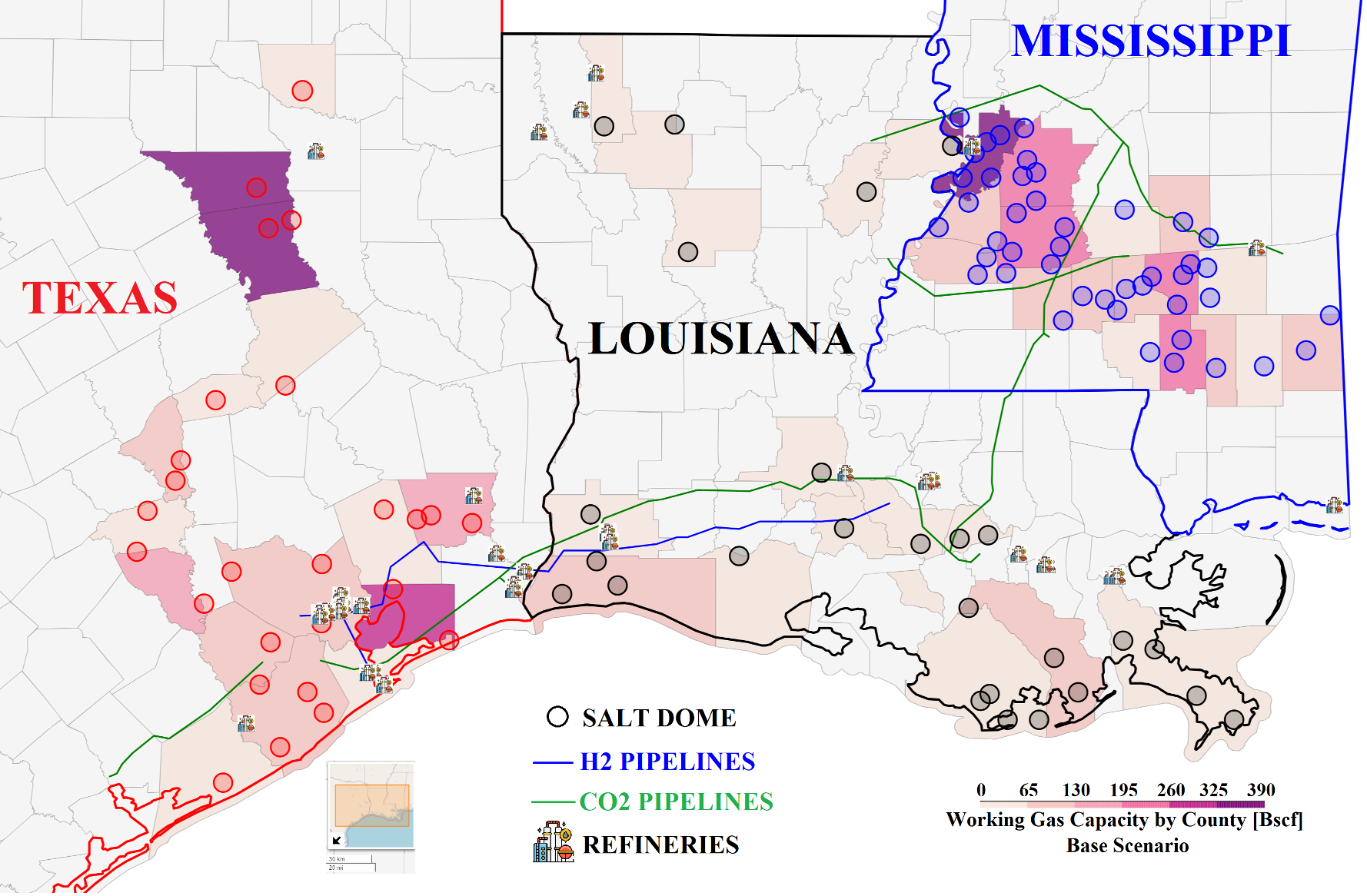
Map generated with the GeoH2 application (V2.0) illustrating salt domes and working gas capacity per county in the states of Texas, Louisiana, and Mississippi (Ruiz Maraggi and Moscardelli, 2024).
To access the interactive map showcasing hydrogen storage potential of salt domes in the U.S. Gulf Coast click HERE.
Development of this application is funded by the State of Texas Advanced Resource Recovery (STARR) program and the GeoH2 Industrial Associate program at the Bureau of Economic Geology
If you have any questions, please contact Dr. Leopoldo M. Ruiz Maraggi (leo.ruiz@beg.utexas.edu) or Dr. Lorena Moscardelli (lorena.moscardelli@beg.utexas.edu)
The python code associated with this application is under license by The University of Texas at Austin via the Office of Technology Commercialization (OTC). You can contact OTC via Dr. Robert Villwock (bvillwock@otc.utexas.edu) and/or Agapito Sustaíta (agapito@Austin.utexas.edu)
